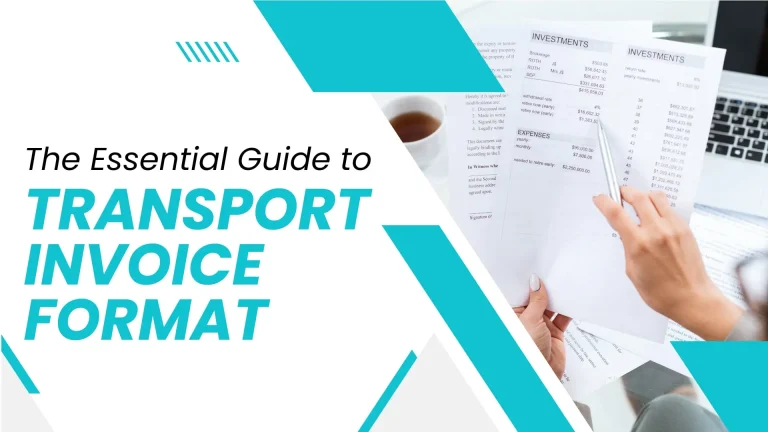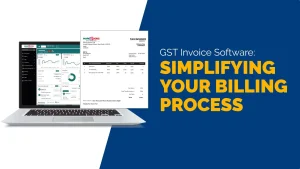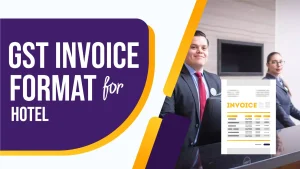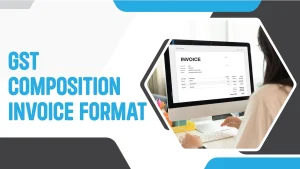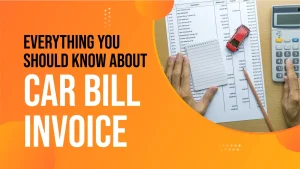In the dynamic world of logistics and transportation, maintaining accurate and detailed records is essential for smooth operations. One of the key components in this sector is the transport invoice. Understanding the transport invoice format is crucial for businesses to ensure they get paid correctly and on time, maintain compliance with regulations, and manage their financial records efficiently. In this comprehensive guide, we will delve into everything you need to know about transport invoice formats, providing detailed information to help you create and manage these invoices effectively.
What is a Transport Invoice?
A transport invoice is a document issued by a transportation company to its clients detailing the services provided and the costs associated with those services. It serves as a formal request for payment and includes critical information such as the description of services, charges, payment terms, and other relevant details. Transport invoices are vital for maintaining transparency and accuracy in financial transactions between transport service providers and their clients.
Importance of a Proper Transport Invoice Format
A well-structured transport invoice format is crucial for several reasons:
- Clarity and Transparency: It ensures that all the necessary details about the service provided and the charges are clearly communicated to the client.
- Accuracy: A standardized format helps in minimizing errors and omissions, ensuring that the invoice accurately reflects the services rendered.
- Professionalism: A well-designed invoice portrays professionalism and helps in building trust with clients.
- Legal Compliance: It ensures that the invoice complies with legal and regulatory requirements, avoiding potential legal issues.
- Efficient Payment Processing: A clear and detailed invoice facilitates prompt payment processing, improving cash flow.
Key Elements of a Transport Invoice Format
To create an effective transport invoice, certain elements must be included. Here are the key components of a standard transport invoice format:
1. Header Information
The header section includes the basic information about the transport company and the client. It typically contains:
- Company Name and Logo: The name and logo of the transport company.
- Contact Information: Address, phone number, email, and website of the transport company.
- Client Information: Name, address, and contact details of the client.
2. Invoice Details
This section contains specific details about the invoice itself:
- Invoice Number: A unique identifier for the invoice.
- Invoice Date: The date when the invoice is issued.
- Due Date: The date by which the payment is due.
3. Service Description
A detailed description of the transport services provided. This section should include:
- Service Date: The date when the service was provided.
- Description of Services: A detailed description of the transport services rendered.
- Quantity and Unit: If applicable, the quantity and unit of the services provided (e.g., number of trips, weight of goods).
4. Charges and Costs
This section outlines the charges associated with the services provided:
- Unit Price: The price per unit of service.
- Total Cost: The total cost for each service, calculated by multiplying the unit price by the quantity.
- Subtotal: The sum of all individual service costs.
- Taxes: Any applicable taxes (e.g., VAT, sales tax).
- Discounts: Any discounts applied to the total amount.
- Grand Total: The final amount due after adding taxes and subtracting discounts.
5. Payment Terms
The payment terms section includes important information about how and when the payment should be made:
- Payment Methods: Accepted payment methods (e.g., bank transfer, credit card, PayPal).
- Payment Instructions: Detailed instructions on how to make the payment.
- Late Payment Penalties: Information about penalties or interest charged for late payments.
6. Additional Information
Any other relevant information or notes that need to be communicated to the client, such as:
- Reference Numbers: Any reference numbers related to the transport services.
- Terms and Conditions: Any specific terms and conditions related to the service and payment.
How to Create a Transport Invoice
Creating a transport invoice involves several steps to ensure all necessary details are included and accurately presented. Here is a step-by-step guide:
Step 1: Choose a Template
Select a transport invoice template that suits your business needs. Many accounting software and online platforms offer customizable invoice templates.
Step 2: Enter Company and Client Information
Fill in the header section with your company details and the client’s information.
Step 3: Add Invoice Details
Provide the invoice number, date, and due date.
Step 4: Describe the Services
List the transport services provided, including the service date, description, quantity, and unit.
Step 5: Calculate Costs
Enter the unit price and calculate the total cost for each service. Add any applicable taxes, discounts, and compute the grand total.
Step 6: Specify Payment Terms
Include the payment methods, instructions, and any late payment penalties.
Step 7: Review and Send
Double-check all the information for accuracy and completeness before sending the invoice to the client.
Transport Invoice Format

Transport Invoice
123 Transport Street, City, Country
Phone: (123) 456-7890
Email: info@transportcompany.com
Website: www.transportcompany.com
789 Client Avenue, City, Country
Phone: (987) 654-3210
Email: client@example.com
Invoice Date: 2024-07-16
Due Date: 2024-07-30
Payment Terms: Net 14 Days
Payment Method: Bank Transfer
| Service Date | Description | Quantity | Unit Price | Total |
|---|---|---|---|---|
| 2024-07-10 | Transport of goods from City A to City B | 1 | $500.00 | $500.00 |
| 2024-07-11 | Additional handling and storage | 1 | $150.00 | $150.00 |
Bank Name: Example Bank
Account Name: Transport Company
Account Number: 12345678
SWIFT Code: EXAMP123
IBAN: EX12345678901234567890
Best Practices for Transport Invoice Management
Effective management of transport invoices is crucial for maintaining healthy cash flow and avoiding payment delays. Here are some best practices to consider:
1. Use Accounting Software
Utilizing accounting software can streamline the invoicing process, ensuring accuracy and efficiency. Software like MargBooks can automate invoice generation, tracking, and management.
2. Maintain Detailed Records
Keep detailed records of all invoices issued and payments received. This helps in tracking outstanding payments and reconciling accounts.
3. Follow Up on Payments
Regularly follow up with clients on overdue payments to ensure timely collection. Sending reminders can help in reducing payment delays.
4. Review and Update Invoice Templates
Periodically review and update your invoice templates to ensure they comply with the latest legal and regulatory requirements.
5. Train Staff
Ensure that your staff is well-trained in the invoicing process and understands the importance of accurate and timely invoicing.
Common Challenges in Transport Invoicing
While invoicing is a critical aspect of the transport business, it is not without challenges. Here are some common issues faced by transport companies:
1. Errors and Omissions
Mistakes in the invoice, such as incorrect service descriptions or charges, can lead to disputes and payment delays.
2. Late Payments
Clients delaying payments can affect cash flow and financial stability. Implementing clear payment terms and penalties can mitigate this issue.
3. Regulatory Compliance
Ensuring that invoices comply with various legal and regulatory requirements can be complex. Staying updated with the latest regulations is essential.
4. Managing High Volume
Handling a large volume of invoices can be overwhelming. Utilizing software solutions can streamline the process and reduce manual workload.
Conclusion
Understanding and implementing a proper transport invoice format is essential for the smooth operation of transport businesses. It ensures clarity, accuracy, and professionalism in financial transactions, facilitating prompt and efficient payment processing. By following the guidelines and best practices outlined in this guide, transport companies can enhance their invoicing processes, maintain compliance, and improve their overall financial management.
Also Read
- How to Ensure Data Security in Your Invoice Management SystemIn today’s digital age, businesses rely heavily on technology to streamline operations and improve efficiency. An invoice management system plays a crucial role in managing financial transactions and maintaining accurate records. However, with the increasing reliance on technology comes the… Read more: How to Ensure Data Security in Your Invoice Management System
- GST Invoice Software: Making Billing EasyIn today’s busy world of business, being efficient is super important. One big thing that needs to be super efficient is billing. With new technology, old-fashioned manual billing is out of date and can make a lot of mistakes. That’s… Read more: GST Invoice Software: Making Billing Easy
- GST Invoice Format for HotelIn the hospitality industry, especially for hotels, managing financial transactions is a very important task. One key part of this financial management is creating invoices that follow the rules of the Goods and Services Tax (GST) in India. Having a… Read more: GST Invoice Format for Hotel
- GST Composition Invoice FormatThe GST (Goods and Services Tax) Composition Scheme is a straightforward and user-friendly taxation scheme designed for small businesses in India. This scheme reduces the compliance burden for small taxpayers by allowing them to pay GST at a fixed rate… Read more: GST Composition Invoice Format
- Everything You Should Know About Car Bill InvoiceWhen it comes to car purchases, sales, repairs, or rentals, a car bill invoice is an essential document. This invoice serves as a record of the transaction and provides a detailed account of the services rendered or goods sold. Understanding… Read more: Everything You Should Know About Car Bill Invoice
Frequently Asked Questions
What is a transport invoice and why is it important?
A transport invoice is a document that details the transport services provided by a company and the associated costs. It’s important because it ensures clear communication between the service provider and the client, facilitates timely payments, and helps maintain accurate financial records. A well-structured invoice promotes transparency, reduces errors, and enhances professionalism, ultimately leading to better client relationships and efficient financial management.
What key elements should a transport invoice include?
A transport invoice should include the company name and logo, contact information, client details, invoice number, invoice date, due date, service description, quantity and unit, unit price, total cost, subtotal, taxes, discounts, grand total, payment methods, payment instructions, and any late payment penalties. These elements ensure all necessary information is communicated clearly and accurately, facilitating smooth transactions.
How can I ensure my transport invoices are accurate?
To ensure accuracy in your transport invoices, use a standardized template, double-check all details before sending, and utilize accounting software to automate the process. Make sure to include all relevant information and verify calculations. Regularly review and update your templates to stay compliant with legal requirements. Training your staff in the invoicing process can also help minimize errors and improve accuracy.
What are the common challenges in transport invoicing?
Common challenges in transport invoicing include errors and omissions, late payments, regulatory compliance, and managing a high volume of invoices. Errors can lead to disputes and payment delays, while late payments can affect cash flow. Staying updated with legal requirements and using software to handle large volumes can help mitigate these issues and ensure efficient invoicing processes.
How can I manage a high volume of transport invoices efficiently?
To manage a high volume of transport invoices efficiently, use accounting software that can automate invoice generation, tracking, and management. Maintain detailed records of all invoices and payments, follow up regularly on overdue payments, and periodically review your invoicing processes. Training your staff and using clear, standardized templates can also help streamline the invoicing process.
How do payment terms affect transport invoices?
Payment terms specify how and when payment should be made, affecting cash flow and financial stability. Clear payment terms, including accepted methods, due dates, and late payment penalties, encourage timely payments and reduce disputes. Including detailed payment instructions and setting expectations upfront can help ensure smooth transactions and improve your financial management.
What role does accounting software play in transport invoicing?
Accounting software plays a crucial role in transport invoicing by automating the process, ensuring accuracy, and saving time. It can generate invoices, track payments, manage records, and stay compliant with regulations. Using software like MargBooks can streamline your invoicing, reduce manual errors, and improve overall efficiency
How can I handle disputes over transport invoices?
To handle disputes over transport invoices, maintain clear and detailed records of all transactions and communications. Ensure your invoices are accurate, transparent, and include all necessary details. If a dispute arises, review the invoice with the client to identify the issue and provide supporting documentation. Open and professional communication is key to resolving disputes amicably and maintaining good client relationships.
What should be included in the service description on a transport invoice?
The service description on a transport invoice should include the date of service, a detailed description of the transport services provided, the quantity and unit (e.g., number of trips, weight of goods), and any additional services rendered. A clear and comprehensive description helps the client understand the charges, ensuring transparency and reducing the likelihood of disputes.
How often should I review and update my transport invoice templates?
Regularly reviewing and updating your transport invoice templates is essential to ensure compliance with legal and regulatory requirements, and to incorporate any changes in your business processes. It’s advisable to review your templates at least annually or whenever there are significant changes in regulations or your service offerings. Keeping your templates up-to-date helps maintain accuracy, professionalism, and efficiency in your invoicing processes.

